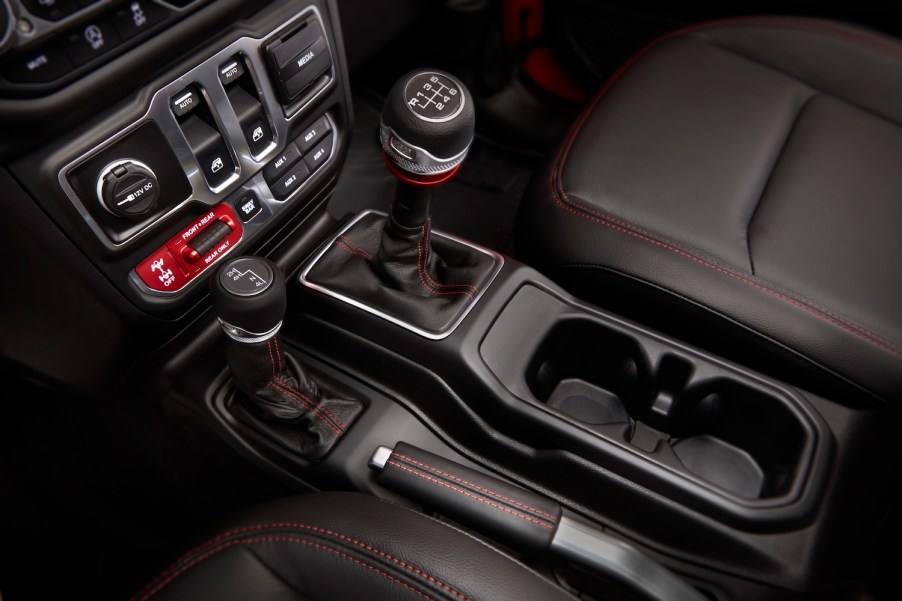
Is It Bad To Run 4WD All the Time?
In poor driving conditions, four wheel drive (4WD) can be critical to car safety. But many people are using 4WD wrong. In a vehicle that can shift between 4WD and 2WD, using 4WD all the time will rapidly wear out drivetrain components. Driving fast in 4WD, even shifted into 4Hi, wears the drivetrain even quicker.
Why it is bad to run 4WD all the time

All wheel drive (AWD) drivetrains drive all four wheels, all the time. In a four wheel drive (4WD) drivetrain, the drive controls a transfer case selector lever. They can switch the vehicle into 4WD or 2WD. This is the primary difference between all-wheel drive and four-wheel drive vehicles. It is because engineers design AWD systems to be engaged all the time, while they design 4WD systems to only be engaged at low speed.
In 2WD mode, a 4WD vehicle’s engine turns its transmission. The power passes through the transfer case and rotates the driveshaft. The driveshaft, in turn, drives the axle which rotates the rear wheels.
While in 2WD mode, the 4WD front axle spins in neutral. The front axle, and the ball joints connecting the axle to the front wheels, are under no extra pressure from the engine. With the front axle in neutral, the front and rear wheels can turn at slightly different speeds as the vehicle goes around a corner. But when shifted into 4WD mode, the same chassis acts very differently.
Most 4WD chassis have no center differential. This means that in 4WD mode, the front and rear axles must spin at the same speed. When going around a corner, one set of wheels must slip a little. This is not a problem at low speeds with limited traction. But at high speeds on dry pavement, it can wear out tires, axle gears, and the transfer case.
In addition, most 4WD front axles are designed to only be engaged at low speeds. Driving a 4WD axle at high speeds increases the load on its bearings and the ball joints. The ball joints are responsible for both steering and driving the front wheels. Activating 4WD and driving fast is a recipe for wearing out expensive components rapidly.
How fast can you drive in 4 wheel drive in high range?

Some drivers are confused by the difference between 4Hi, 4Lo, and 2Hi. The transfer case’s 2Hi setting disengages the front axle and connects the transmission directly to the rear axle. The 4Hi setting engages the front axle and connects the transmission directly to the rear axle. In this setting, all the transmission’s gears will drive the vehicle at the same speed as they would in 2WD. But this does not mean its smart to drive the vehicle at the same speed as you would in 2WD. Finally, the 4Lo setting activates the front axle and a low-range transfer case gear. In 4Lo, each of the transmission’s gears will propel the vehicle much more slowly (and with more torque) than it would in 2Hi or 4Hi.
If you shift your transfer case into 4Hi, it is possible to drive just as fast as in 2Hi. Activating 4WD will not affect braking in any way, so it is not technically dangerous to drive quickly in 4WD. That said, most operator manuals warn that you will damage drivetrain components if you use 4WD above 50 mph. This is because of the added torque on the front drivetrain components as well as the wear and tear on axle gears without a center differential. If you own a 4WD, it is worth checking your operator’s manual for guidelines.
What to do if you accidentally drove in 4 wheel drive

If you accidentally left a vehicle in 4WD for a long, high-speed drive on pavement, you may have damaged some drivetrain components. These components may include tires, front ball joints, front bushings, either axle, or the transfer case.
After this incident, it would be wise to have a professional take a look at your vehicle. In addition, consider changing differential and transfer case fluids and greasing affected drivetrain parts. Fresh lubrication may slightly extend the life of damaged components.



